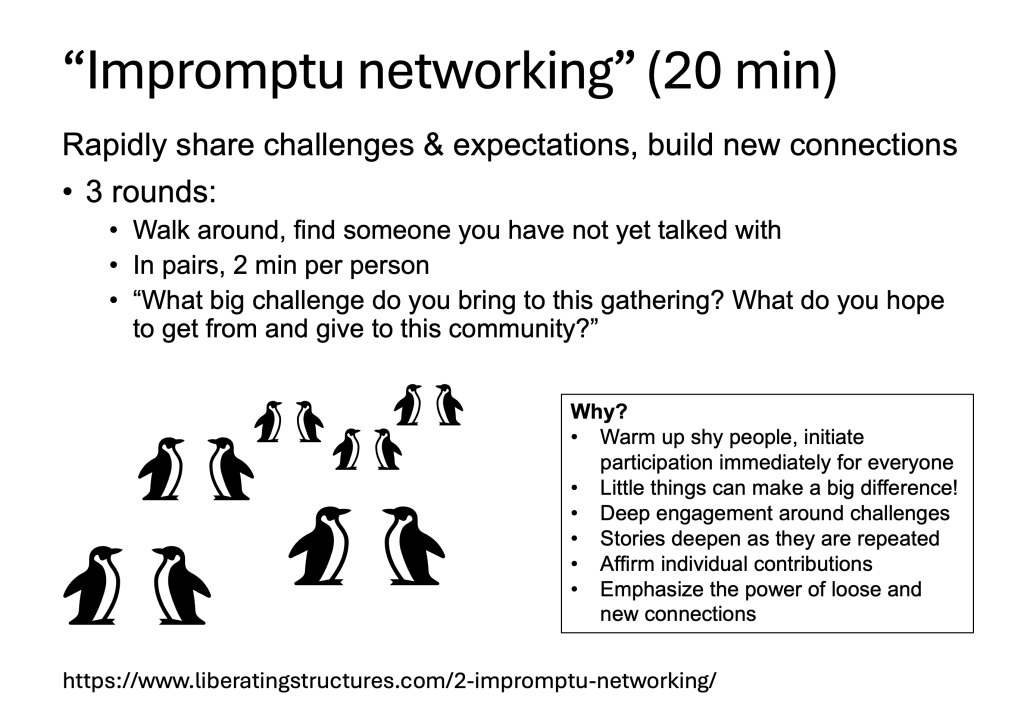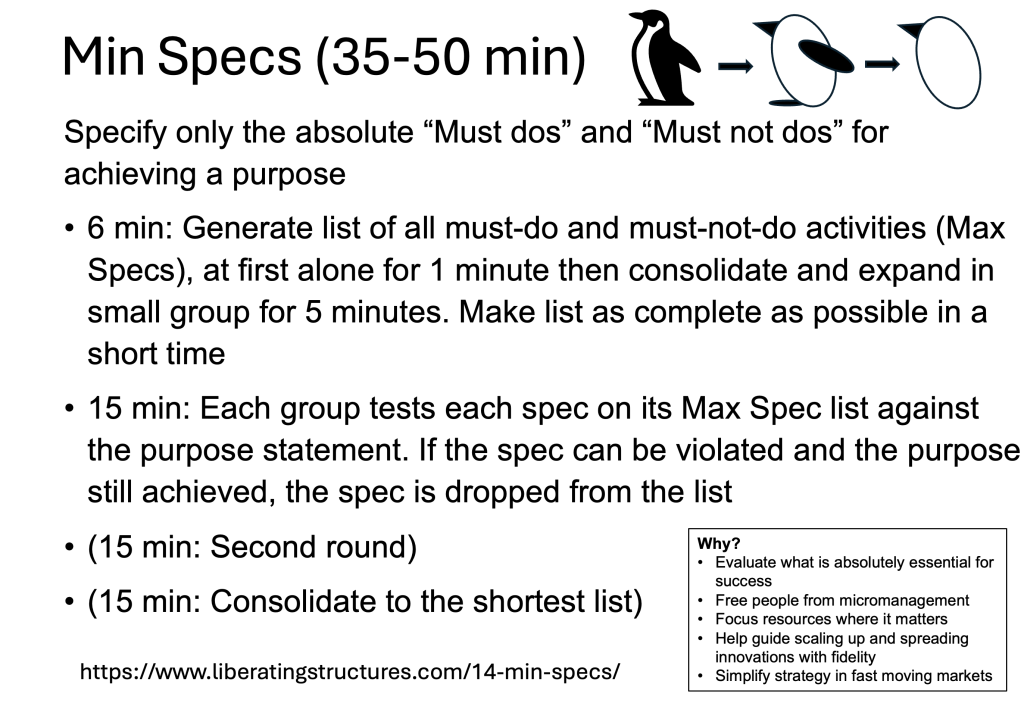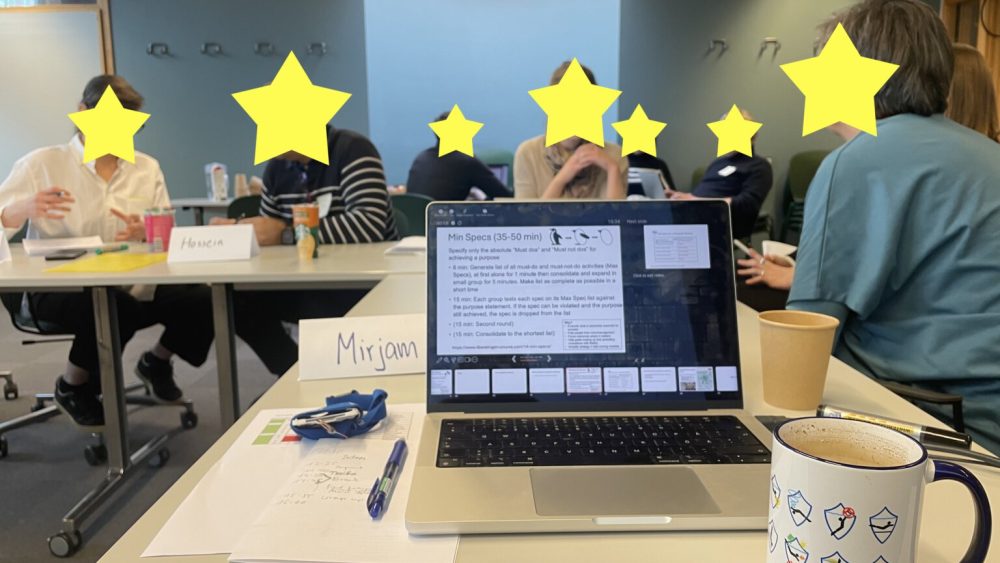Liberating Structures were developed to “engag[e] everyone to build a good life together” (Lipmanowicz et al., 2015). They are a collection of methods that can “unleash the collective intelligence of the entire community of students”, by organising space and air time in such a way that everybody is equally invited to contribute and that is facilitated such that all voices are heard, and that ideas are evaluated based on their merit and not on who had them. Being heard and seen makes participants feel valued and included, and that contributes to motivation to keep going even with difficult tasks. That is exactly what we want in teaching for sustainability — both for its effect on motivation, but also because in a sustainable world, all voices are valued and included in the discussions, and ideas are evaluated independently of status or other markers of whom they came from.
The individual methods are not rocket science, the easiest one (“1-2-4-all”) is basically a version of think-pair-(2-pairs-together)-share (one of the equitable classroom techniques that I wrote about the other day). Here are two other methods that we used in our “Teaching for Sustainability” course last week (but check out the full collection at Liberating Structures, too):
Impromptu Networking
Impromptu Networking (see also figure below) is an alternative to the classical introduction round where some few people take up a lot of airtime, others are too stressed about what they are going to say when it is their turn to listen to the previous speakers, the teacher sees their time management imploding, and many are overwhelmed by all the information coming at them from all sides. In Impromptu Networking, on the other hand, participants only talk for a few minutes in three rounds of pairs, and focussed on their expectations for the meeting, what they hope to contribute, and what they hope to get out. This means that the meeting starts with a decentralised discussion about the purpose of the meeting, where participants sharpen their own expectations and roles through three short conversations. Even though in this method not everybody (in fact, nobody) gets to speak in front of the whole group, everybody builds or strengthens three connections with other participants and is immediately engaged, seen and heard.

Min Specs
The Min Specs method is perfect for streamlining processes but getting commitment behind each step by pruning everything down to the bare minimum. Here, participants generate “rules” for a process and then ask themselves “if this rule was broken, would we still be able to achieve the purpose?”. If the answer is yes, that rule is dismissed. So in the end, the set of rules that remains is absolutely necessary for the success of the project, which gives a lot of flexibility because other, unnecessary rules are gone, but it has also become clear to everybody why the remaining rules are essential.
For example, if you were to organise a meeting, it is essential to announce time and date, and to define a purpose for the meeting, but inviting an expert speaker, having a detailed agenda, or preparing fancy slides are optional.

There are a bunch more methods for many different purposes, which I might present as we use them in our course. In the meantime, you could browse the library for other structures (Liberating Structures), and let us know about your thoughts and experiences using them!
Lipmanowicz, H., Singhal, A., McCandless, K., & Wang, H. (2015). Liberating structures: Engaging everyone to build a good life together. Communication and” the good life”(International Communication Association Theme Book Series, Vol. 2, pp. 233-246). New York: Peter Lang.

